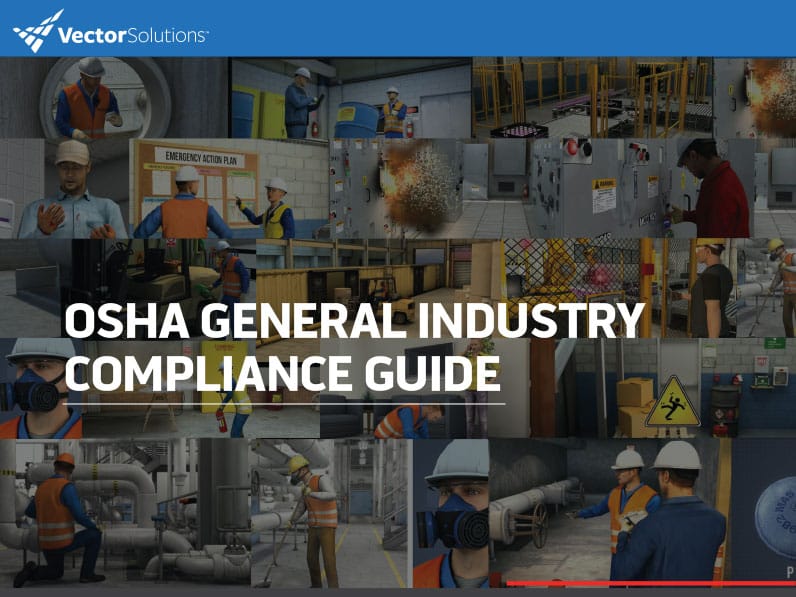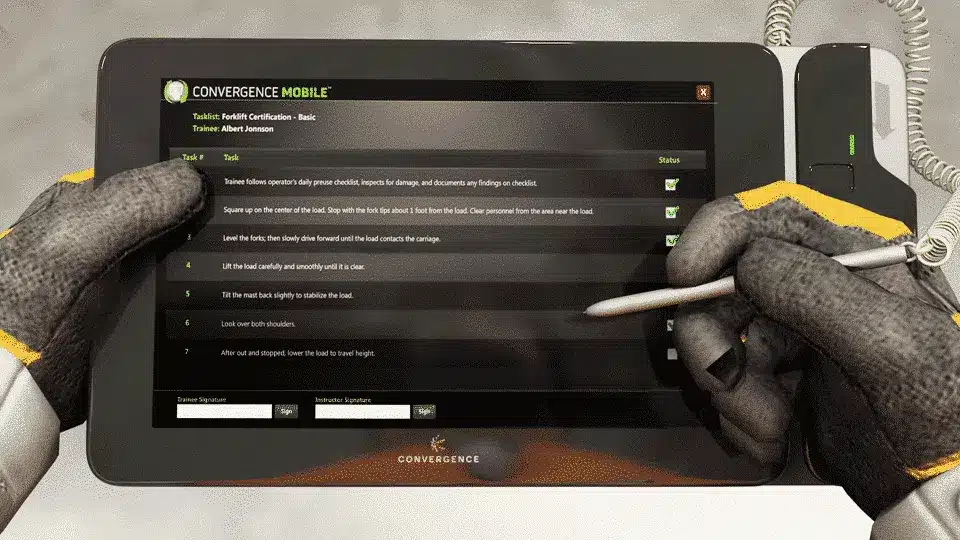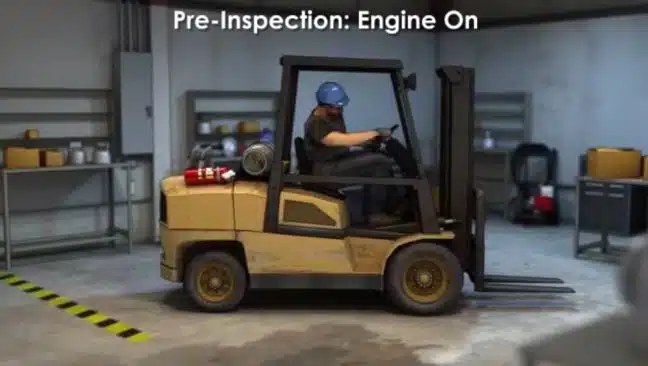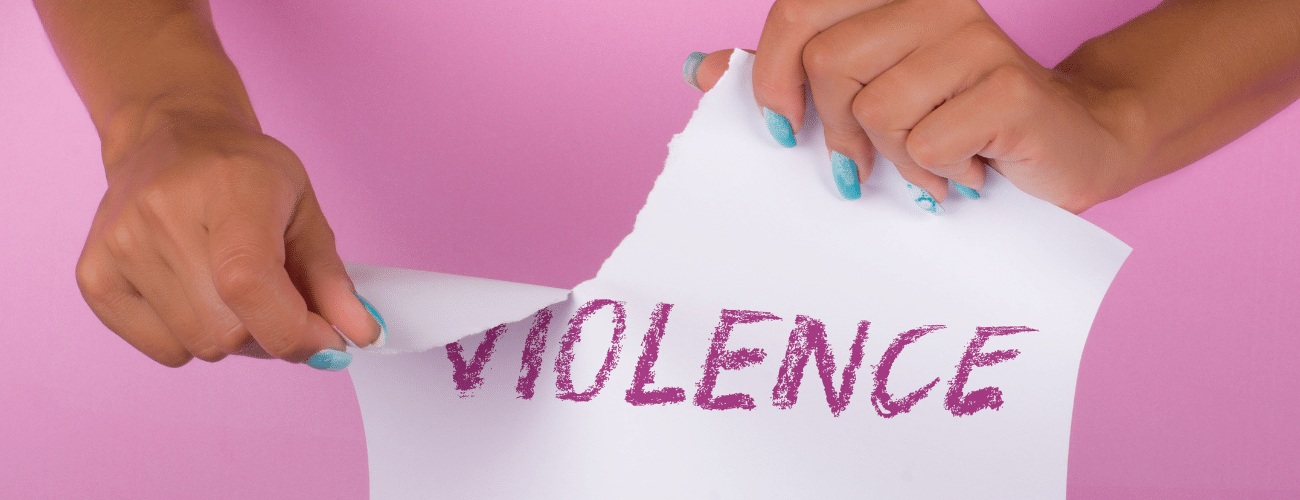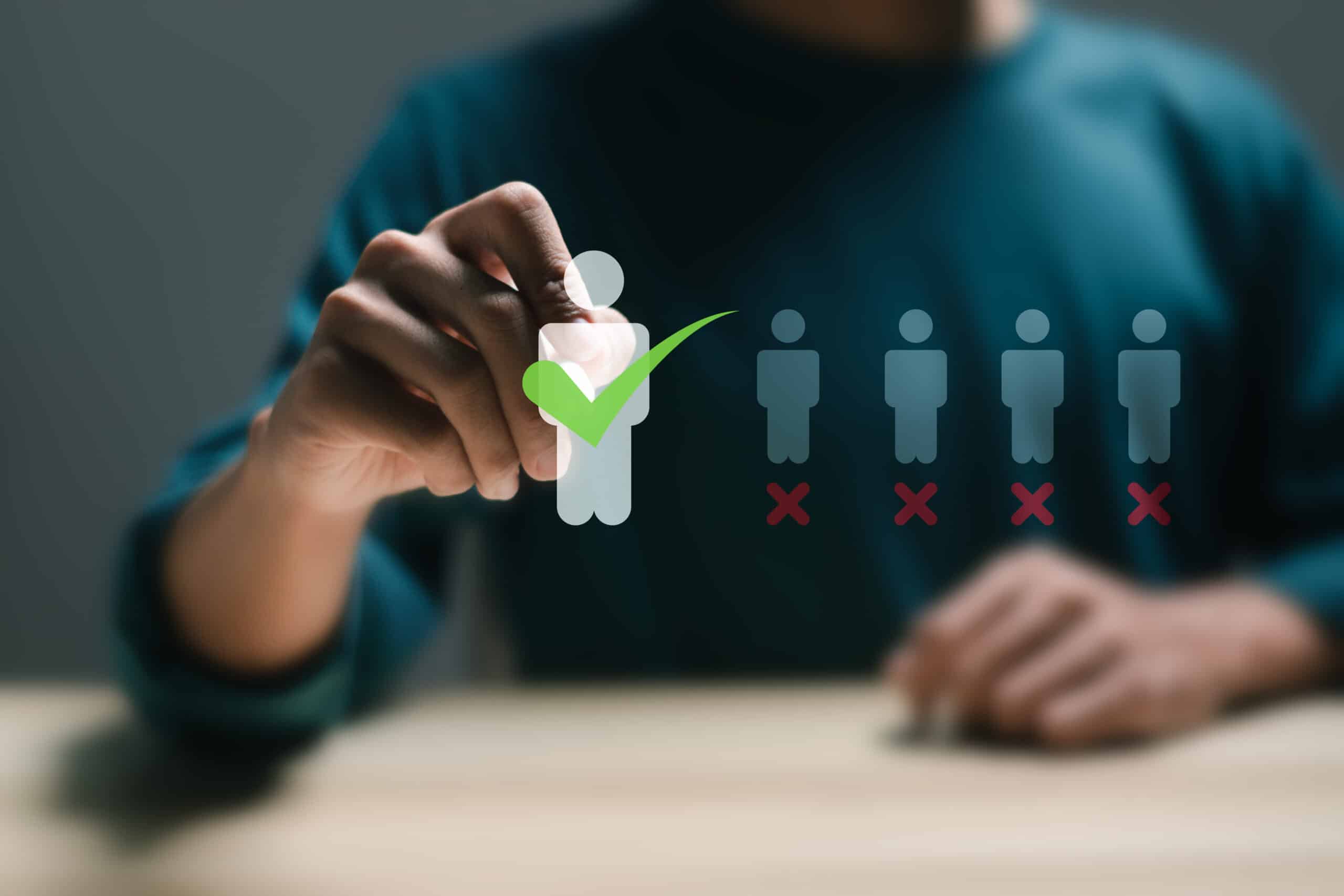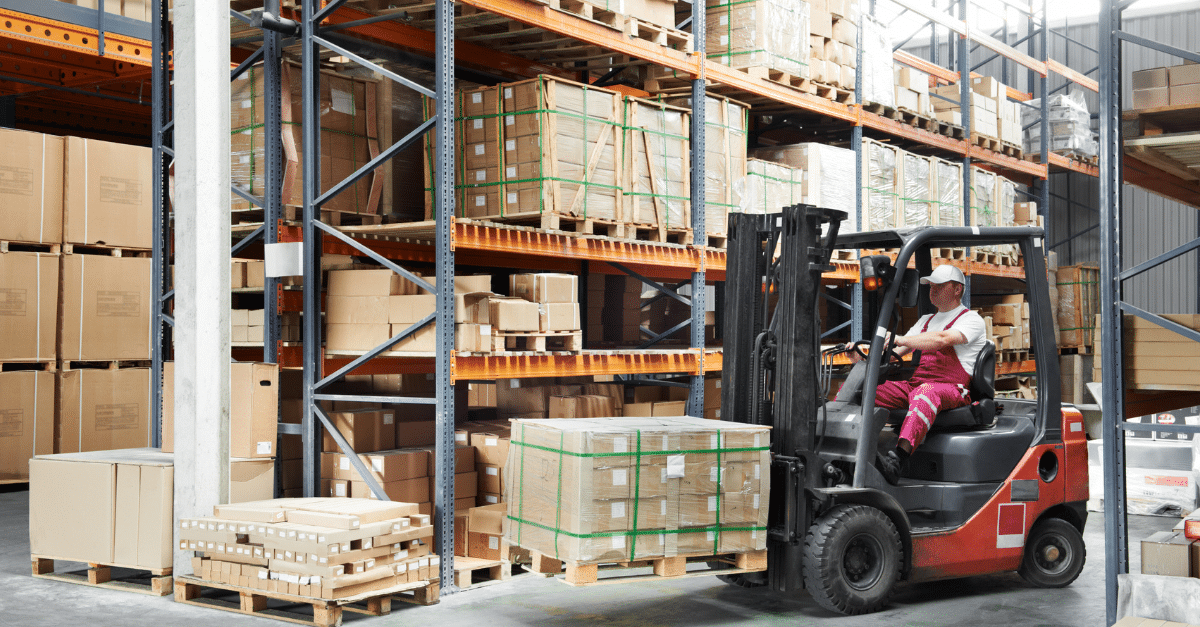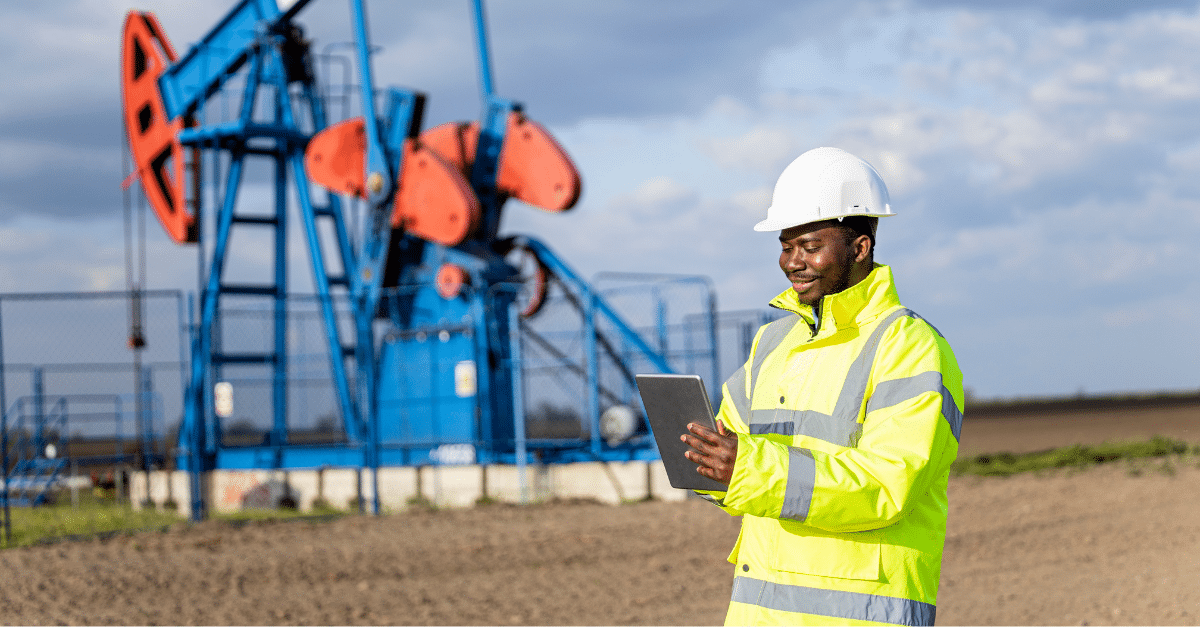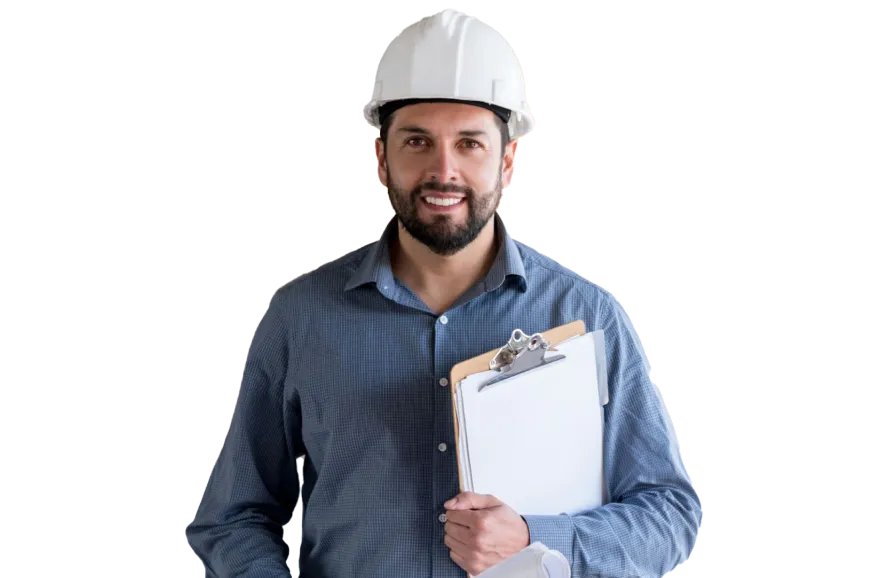October 13, 2023 32 min read
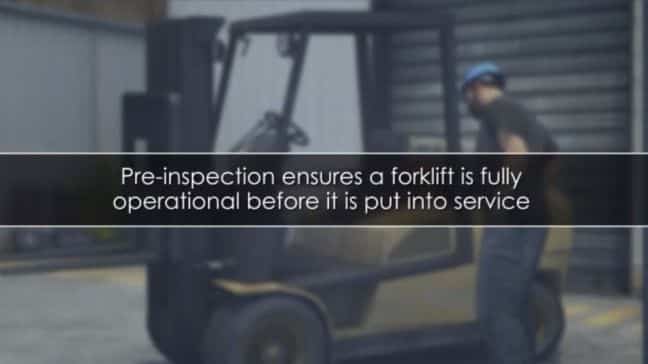
How to Operate a Forklift: Pre-Operation, Traveling, Load Handling, and Maintenance
Industry:
Solution:

How to Operate a Forklift: Pre-Operation, Traveling and Maneuvering, and Load Handling
Each year, there are around 35,000 to 62,000 injuries and 87 deaths due to forklift accidents. Forklift accidents not only result in costly damages to property but more importantly, they have devastating impacts on people’s lives across the globe. This underscores the critical importance of the forklift operation and safety information provided in this article, pertinent to both employees and employers.
We’ll break down instruction on how to drive and operate a forklift into three sections:
- Pre-operation, including pre-operation inspections
- Traveling and maneuvering the forklift
- Handling loads with the forklift
As you’ll see, each of the three sections will be broken down into instructions for smaller tasks involved in learning how to drive a forklift.
Remember that before anyone operates a forklift, they must receive proper forklift safety training. OSHA details the specifics for that in 1910.178(l) and we have a separate article on forklift operator training requirements as well.
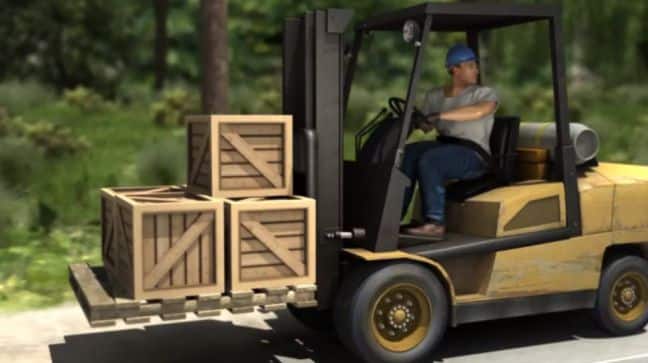
Forklift Pre-Operation Duties
Before you can operate a forklift, you’re going to need to:
- Perform pre-operation forklift inspections, which vary depending on the type of forklift
- Mount the forklift
- Start the forklift
- Perform operational inspections with the engine running
Instructions for performing each of these steps of operating a forklift are provided below.
This should go without saying, but we’ll say it anyway: if a forklift has been taken to service because it’s defective, needs repair, or is in any other way unsafe, never return it to service until the problem has been resolved.
Pre-Operational Forklift Inspection
In 29 CFR 1910.178(g)(7), OSHA requires all forklifts be examined at least once a day before they are placed into service. If a forklift is used around the clock, then inspections must occur after every shift.

The forklift operator should preform two inspections:
- Pre-operational visual inspection with key off
- Operational inspection with engine running
We’ll cover both inspections in this section, starting with the pre-operational inspection.
If the forklift operator determines that the forklift needs repair or servicing as a result of the inspection(s), the forklift must be immediately removed from service.
Risk Management Guide for Safety
Learn to use risk-management approaches for safety and health management.
Download Now
General Pre-Operational Inspection Items
Before the forklift is turned on, visually inspect the following:
- Oil level
- Water level
- Hydraulic fluid level
- Hydraulic hoses (look for leaks, cracks, or any other defects)
- Mast chains (look for cracks, breaks, or any other defects). Use a stick or similar device to check the chain tension. The forklift operator should never place a hand into the mast.
- Tires, including condition and pressure (be sure to inspect for cuts and gouges)
- Forks (check the condition, including the top clip retaining pin and heel
- Loaded backrest extension
- Finger guards
- Safety decals and nameplates (make sure they are all in place and legible; check that the information on the nameplate matches the model and service numbers and attachments)
- Operator manual (make sure it’s there on the truck and that it’s legible and complete–no missing or torn pages, etc.)
- Operator compartment (check for debris, grease, etc.)
- Safety belt and all other safety devices (make sure they’re all working properly)

Pre-Operational Inspections for Electric Forklifts
If you have an electric-powered forklift, check these items during the pre-operation inspection in addition to the items on the “general” list:
- Cables and connectors (look for frayed, exposed, or otherwise damaged wires)
- Battery restraints
- Electrolyte levels (always use proper personal protective equipment, such as a face shield, rubber apron, and rubber gloves, when checking the electrolyte level)
- Hood latch
Pre-Operational Inspections for Internal Combustion Forklifts
If you have a forklift powered by an internal-combustion engine, check these items during the pre-operation inspection in addition to the items on the “general” list:
- The liquid propane tank (ensure it’s properly mounted; check for dents and cracks; check to make sure it fits within the profile of the tank)
- Pressure relief valve (make sure it’s pointing up)
- Hoses
- Connectors
- Tank restraint brackets
- Any leaks
Remember to always use proper personal protective equipment, such as a face shield, long sleeves, and gauntlet gloves, when making these inspections
Per-Operational Inspections for Liquid Propane Forklifts
If you have a forklift powered with liquid propane, check these items during the pre-operation inspection in addition to the items on the “general” list:
- Engine oil
- Brake reservoir
- Engine coolant
- Air filter
- Belts and hoses
- Radiator
- Hood latch
Free Downloadable Forklift Inspection Checklists
We’ve even made some handy Forklift Inspection Checklists for you to download. Nice, huh?
Mounting the Forklift
People frequently get hurt while attempting to mount the forklift they’ll operate. In particular, hazards include:
- Hitting your head on the overhead cage
- Slipping, tripping, and falling, especially when feet slip off the step
Here are some ways to avoid these hazards:
- Make sure your hands are clean, dry, and empty when mounting the forklift
- Wear appropriate shoes or boots that avoid skids
- Check your shoes for grease or anything else slippery
- Grab the handhold and get a good trip. Don’t grab the steering wheel as a way to mount the forklift–the steering wheel may move, causing you to lose your balance
- Be careful with your footing at all times; be aware of what you’re doing, do it slowly, and be intentional
- Pull your body up into the forklift-don’t jump
Starting the Forklift
Don’t try to start the forklift before you’ve completed the pre-operational inspection. Once that’s done, start the forklift and then prepare to complete the operational forklift inspection before driving off.
Operational Forklift Inspection
After the pre-operational inspection (with key off) is complete and you’ve mounted the forklift, it’s time for a operational forklift inspection.
You’ll conduct this second inspection with the engine running. During the operational inspection, check:
- Accelerator linkage
- Inch control (if present)
- Brakes
- Steering
- Drive control, including both forward and reverse
- Tilt control, including forward and back
- Hoist and lowering control
- Attachment control
- Horn
- Lights
- Back-up alarm (if present)
- Hour meter
In addition to all of the above, observe for unusual noises or vibrations. If you detect any, report them immediately.
Traveling and Maneuvering the Forklift
In this next section of our instructions on how to drive a forklift, we’re going to cover instructions for traveling on and maneuvering the forklift.
Many people think that operating a forklift is simple and basically like driving a car. But in fact, driving a forklift is very much different than operating a car, and that’s one of many things you should know before you operate the truck.
Visibility Concerns While Operating the Forklift
Operating a forklift with blocked or partially blocked visibility increases the chances of an accident.
Impaired visibility can lead to hazards such as:
- Collisions
- Falling load
- Having the forklift fall off a loading dock
- Striking or crushing pedestrians
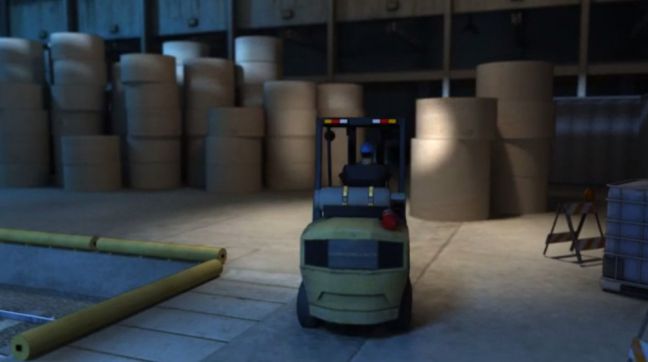
Because none of that is good and we want to avoid all of it, do everything possible to make sure visibility is entirely unblocked or blocked as little as possible before operating. Here are some requirements and recommendations:
- Keep a clear view
- Look in all directions around you before you begin
- When traveling, always look in the direction of travel. This includes looking behind you when operating in reverse
- Use spotters, rear view mirrors, and/or other aids to increase visibility whenever possible
- When possible, use concave mirrors when entering buildings or aisles and/or when approaching corners or other blind spots
- If lighting is dim (less than two lumens per square feet), use headlights
- Use headlights when operating at night, outdoors, and/or in any area where additional lighting would improve quality
- Drive slowly into and out of warehouses or other buildings. Moving from a bright to a dark area, or from dark to bright, can temporarily disrupt visbility.
- Be cautious on loading docks and stay away from edges, which can be hard to see
- Slow down and sound the horn at cross aisles and other locations where vision can be obstructed
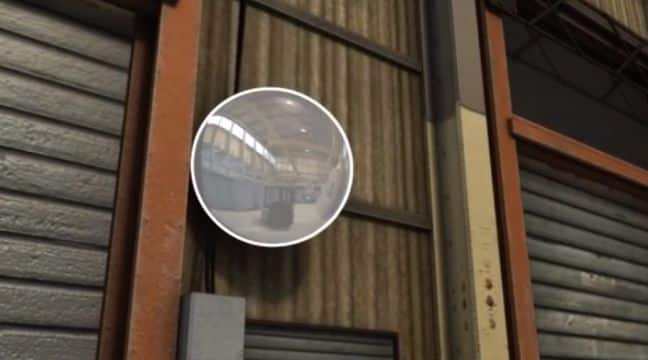
In addition, consider adding the following at the work area to decrease hazards related to limited visibility:
- Add physical barriers such as ramps, raised concrete staging areas and heavy-gauge safety chain in front of loading dock openings.
- Use protective guard rails
- Add a “warning track” of yellow floor paint near dock openings
Beginning to Drive the Forklift
Before you begin to move the forklift, make sure your way is clear by looking in your direction of traffic. Sound your horn and/or use a spotter if your vision is obstructed.
Once you’re sure your path is clear, proceed with caution down the path of travel and watch for dangerous curves, blind spots, intersections with pedestrian traffic, and/or any other hazards.
Driving the Forklift at Speed
When you’re driving the forklift at speed, always anticipate and do everything possible to avoid the following potential hazards:
- Tipovers caused by driving too fast
- Collision with pedestrians and obstacles caused by not paying attention and not having time to stop
In short, drive slowly and pay attention.
In addition, follow these requirements and recommended practices:
- Look in the direction of, and keep a clear view of, the path of travel
- Always operate the forklift at a speed that will allow you to stop it in a safe manner
- Slow down when driving on wet or slippery floors
- If the load you’re carrying obstructs your forward view, travel with the load trailing instead
- Slow down and sound the horn at cross aisles and other locations where your view is obstructed
- When turning, always slow down to a safe level and turn the steering wheel in a smooth, sweeping motion
- When driving up or down a grade (or incline), always do so slowly
- When driving up or down a grade in excess of 10 percent, drive a loaded truck with the load upgrade
- Don’t run over loose objects on the path of travel
- Obey and/or observe all posted speed limits and warning signs
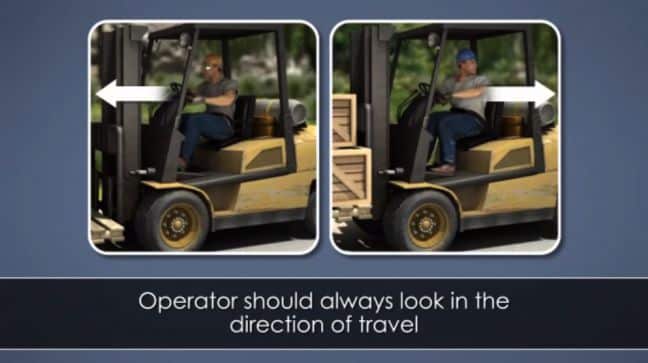
Changing the Forklift’s Direction of Travel
Changing directions on a forklift raises hazards. These include:
- Tipover
- Collision with a pedestrian
- Collision with another vehicle
- Collision with an object
To avoid those hazards, follow these requirements and recommendations:
- Always stop completely before changing directions
- Use a horn and/or a warning light to warn pedestrians before and while you operate in reverse
Steering and Turning the Forklift
When you’re steering a forklift, potential hazards include:
- Collisions with pedestrians or objects; this hazard is increased because of the way the rear end (or tail) of a forklift swings out widely to the side opposite the turn
- Colliding with something and then having the load fall
- Tipovers caused by turning too sharply
To avoid these hazards, follow these requirements and recommendations:
- Plan your route in advance and anticipate all turns
- Never turn with the forks elevated
- Never turn on a grade (or incline/decline). Turning on a grade makes the forklift more likely to tipover–even a small grade.
- Reduce speed to safe level when turning
- Use extreme care when making a turn, especially when turning in confined areas or narrow aisles. This is because when a forklift turns a corner, the rear end of the forklift swings out widely in the direction opposite of the turn
- Because the forklift’s tail end swings out widely in the direction opposite of the turn, always start the turn as close as possible to the inside corner
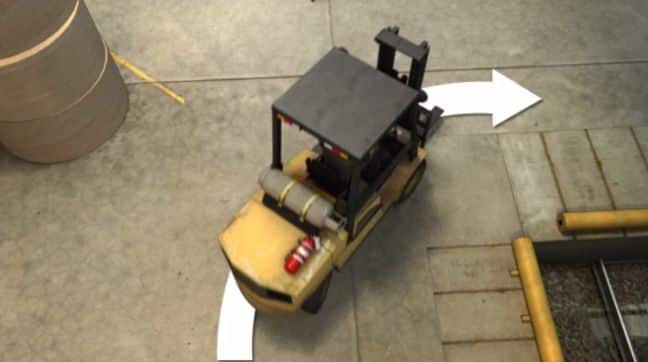
Reversing the Forklift
Reversing a forklift increases the risks of injury and accidents. Hazards involved in reversing the forklift include:
- Striking or crushing pedestrians
- Colliding with another forklift or object
Always use extreme caution when backing up. In addition, follow these requirements and recommendations:
- Keep a clear view in the direction of travel
- Look in the direction of travel. That means looking behind you when driving in reverse.
- Always be aware of limited visibility, and use extra caution when driving in reverse
- Consider using ground guides, rear-view mirrors, spotters, or other aids to increase visibility while operating in reverse
- Consider the noise level in your workplace and the possibility that other workers are wearing hearing protection. Don’t assume that pedestrians or bystanders are able to hear your back-up alarm.
- Always leave lots of room for pedestrians. Remember that you can’t correctly anticipate all of their actions and many pedestrians are not familiar with the operational limits of a forklift.
- Don’t grab the overhead guard when traveling in reverse. This could result in harm to your finger.

Operating the Forklift on Grades (Inclines and/or Declines)
When a forklift is operated on a grade, hazards include:
- Tipover
- Falling load
To reduce these hazards, follow these requirements and recommendations:
- Always drive unloaded forklifts with the forks downgrade
- Never drive a loaded forklift with the load downgrade
- When driving up a ramp, drive loaded forklifts forward with the load upgrade
- When driving down a ramp, drive loaded forklifts in reverse with the load upgrade
- Never turn a forklift while driving on a grade (incline or decline)

Safe Forklift Travel Practices
Forklifts always pose some level of hazards while they’re being operated, including: Approximately 42% of all fatal forklift accidents involve being crushed by the vehicle when it’s tipping over. Other hazards include:
- Overturning
- A load that falls
- Striking a person or crushing a person
- Collisions
As a result, always follow these requirements and recommendations while operating a forklift:
- Always look in all directions before beginning to travel
- Always look in the direction of travel while traveling
- If a load on the forks blocks your view of the intended path of travel, travel in reverse.
- Always maintain a safe distance from the forklift ahead of you (about three truck lengths)
- Observe all traffic regulations and posted signs, including plant speed limits
- Keep the forklift under control at all times
- Yield the right of way to ambulances, fire trucks, or other emergency vehicles in emergency situations
- Don’t pass other forklifts (or powered industrial trucks) that are traveling in the same direction while at intersections, blind spots, or at other dangerous locations
- Whenever possible, avoid crossing railroad tracks in a perpendicular direction. Instead, cross them diagonally when possible
- Never park closer than 8 feet from the center of railroad tracks
- Always operate the forklift at a speed that will allow you to stop the forklift safely under all travel conditions
- Never take part in horseplay while driving a forklift and never take part in stunt driving with a forklift
- Slow down while operating on wet or slipper floors
- Properly secure dockboards or bridgeplates before driving a forklift over them. While driving over them, be careful and drive slowly. Never exceed the listed capacity of a dockboard or bridgeplate.
- While driving a forklift, always approach elevators slowly, wait for the elevator car to be properly leveled, and only then and enter the elevator squarely. Once on an elevator, neutralize all controls, shut off the power to the forklift, and set the brakes.
- Do as much as possible to keep forklift traffic patterns separate from pedestrian traffic. When possible, use established pedestrian walkways and strictly enforce their use. Use guard rails and floor markings on pedestrian walkways.
- Never carry a passenger on a forklift
- Keep your arms and legs inside the forklift at all times during operation
- Watch for any surface obstruction; even small ones can knock the load off your truck
- Never drive a forklift up to a person who is in front of a bench or any other fixed object
- Never drive into a position that would lead to a coworker being pinned between the forklift and something else if the forklift jumped forward, the brakes failed, or the wrong lever was pushed

Stopping the Forklift
When stopping a forklift, always follow these requirements and recommendations:
- When preparing to stop, apply the brake slowly
If you’re stopping the forklift to park, follow the recommendations below as well
Parking the Forklift
A parked forklift can present hazards to the forklift operator and to others as well.
These hazards include:
- The possibility of a forklift being parked in the wrong place and, as a result, being struck by people or objects
- The possibility that the forklift might somehow move
To avoid these hazards, the parked forklift should be properly secured.
A forklift is considered to be unattended if the operator is 25 feet away or further from the forklift. This is true even if the forklift is in the operator’s view. In addition, the forklift is considered unattended anytime the operator leaves the forklift and the forklift is not in his view (even if the forklift is closer than 25 feet away).
When stopping a forklift, always follow these requirements and recommendations:
- Avoid parking on a grade if possible
- Never park in an unauthorized area
- Never park in a way that blocks an aisle or an exit
- Select an appropriate area to park; follow your company’s recommendations for parking forklifts to do so
- When preparing to stop, apply the brake slowly
- Once stopped, tilt the mast forward slightly and fully lower the load
- Neutralize the forklift controls
- Once the forklift has stopped, engage the parking brake
- Turn off the ignition
- Get off the forklift without jumping (see “Dismounting the Forklift” below for more details on this)
- If you’ve parked the forklift on a grade, block the wheels
If the forklift is disabled, and you can’t lower the forks to the floor, follow proper lockout/tagout procedures (as described in 29 CFR 1910.147) and make sure nobody stands or passes under the forks and/or load.
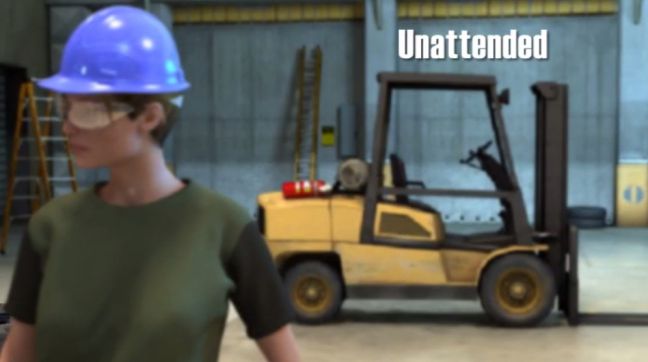
Dismounting the Forklift
Just as its important to be careful while mounting a forklift, it’s also important to be careful while dismounting a forklift.
Here are some ways to avoid these hazards:
- Make sure your hands are clean, dry, and empty when mounting the forklift
- Wear appropriate shoes or boots that avoid skids
- Check your shoes for grease or anything else slippery
- Grab the handhold and get a good trip. Don’t grab the steering wheel as a way to mount the forklift–the steering wheel may move, causing you to lose your balance
- Be careful with your footing at all times; be aware of what you’re doing, do it slowly, and be intentional
- Pull your body up into the forklift-don’t jump
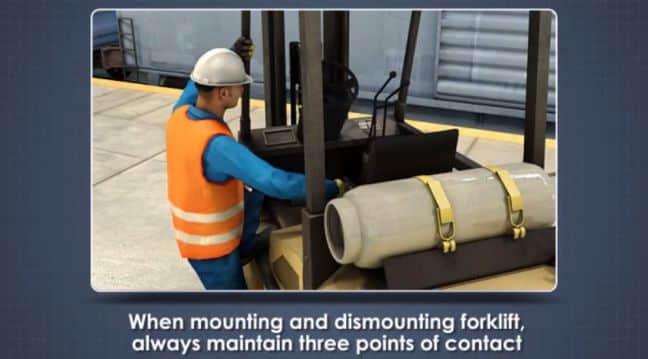
Forklift Tipover Risks
Forklifts tip over in two basic ways:
- Tipping over forward, also known as a longitudinal tipover
- Tipping over to the side, also known as a lateral tipover
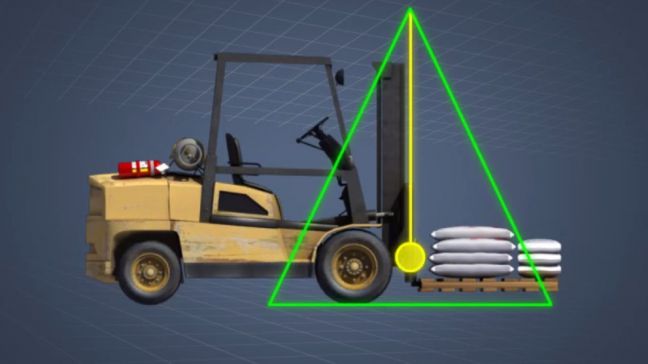
What you can do to avoid a tipover depends on the type of tipover and the class of forklift you’re using.
What To Do In the Event of a Tipover
If you’re operating a sit-down counterbalanced forklift and it’s tipping over:
- Stay in the forklift; don’t try to jump out
- Hold tightly to the steering wheel
- Brace your feet
- Lean your body away from the anticipated point of impact
- Lean your body forward
As mentioned earlier, tipover hazards vary depending on the type of forklift. That’s also true of what an operator should do if a forklift is tipping over–procedures differ depending on the type of forklift. For example, a person operating a stand-up forklift with rear-entry access, the best thing to do during a tipover is to step backwards off of the forklift.
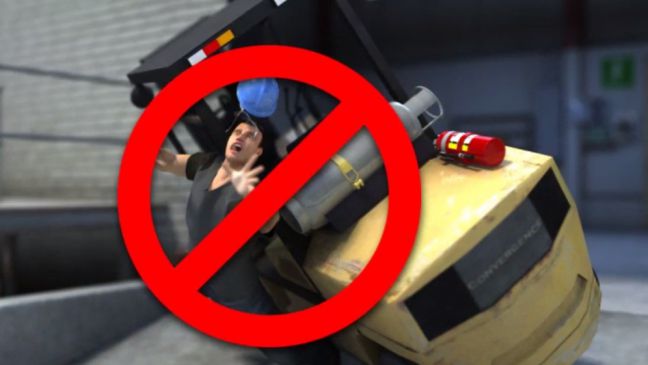
Handling Loads with a Forklift
The point of operating a forklift is to lift and move loads. And so part of learning how to drive a forklift is learning how to handle loads with the forklift.
As a result, we’ll look at some tips and considerations for safely handling loads with a forklift in this section.
We’ll consider:
- Preparation for safely handling a load
- Approaching the load with the forklift
- Mast position on the forklift
- Lifting the load
- Lowering the load
- High tiering
- Truck trailers and railroad cars
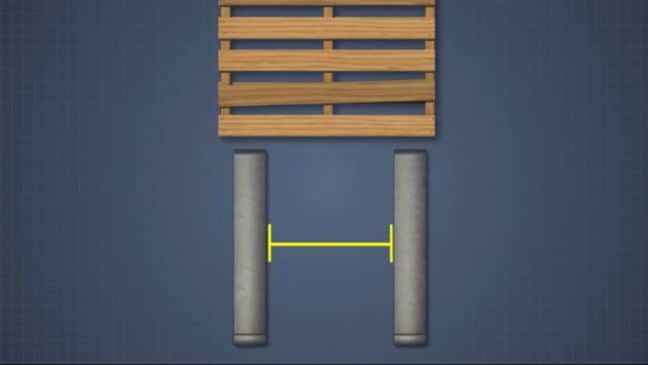
Safe Handling Preparation
There are some general rules to follow to ensure safe handling of loads with a forklift.
Before you handle a load, watch out for:
- Loads which are off-center and may cause the forklift to tipover or the load to fall off the truck
- Overloading the forklift, which can cause the forklift to tipover or the load to fall
- Damaged loads
- Loose loads
In addition, follow these requirements and recommended practices:
- Always secure the load to ensure it’s stable and safely arranged.
- Never carry damaged merchandise without first wrapping or banding it to secure it
- Center the load when possible
- When handling an off-cetner load that can’t be centered, use caution.
- Distribute the heaviest part of an uncentered load nearest the front wheels of the forklift
- Know the load capacity of the forklift and do not overload the truck.
- Remember that the forklift’s load capacity is calculated assuming that the load is centered. If the load is off-center in any way, this may affect the forklift’s capacity and create hazards
- Use the load extension backrest
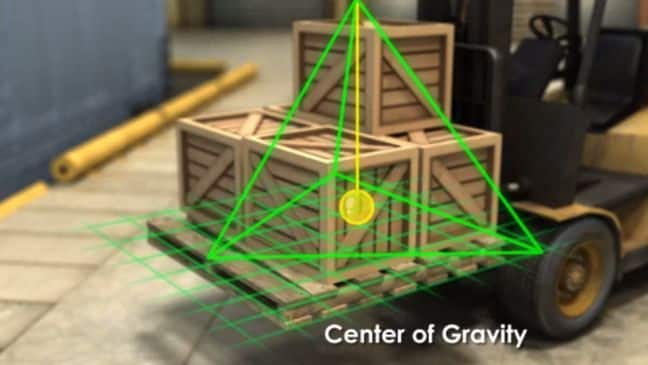
Approaching the Load
Accidents sometimes occur when a forklift operator approaches a load too fast or turns too rapidly while approaching the load.
To avoid incidents while approaching the load, follow these requirements and recommendations:
- Always approach the load slowly and carefully
- Stop 8-12 inches in front of the load
- Make sure the truck is placed squarely in front of the load
- Make sure the forks are at the correct height for lifting the load
- Set the direction control to neutral
- Never raise or lower the forks unless the forklift is stopped and the brake is set
- Before raising the load, make sure there’s enough overhead clearance. Your vision can be blocked after the load is elevated.
- Use the inching pedal to creep the load to the stack.
Mast Position
The mast is the part of the forklift in the front that the actual forklifts ride up and down on.
While you’re moving the mast, take care to avoid tipovers and dropped loads.
To do so, follow these requirements and recommendations:
- Always use caution when using the mast to tilt loads
- Never tilt the mast forward with forks elevated unless you are picking up a load or putting down a load
- When stacking or tiering materials, tilt the mast backward only enough to stabilize the load and no more
- When handling loads that are close to the trucks’ maximum load capacity, be cautious, tilt the mast back and position the heaviest part of the load against the carriage, and travel with the mast tilted back to keep the load stable
- Use caution when tilting the mast forward while positioning the load onto the stack
- Never travel on a forklift with the load tilted forward. This increases the load distance and destabilizes the load.
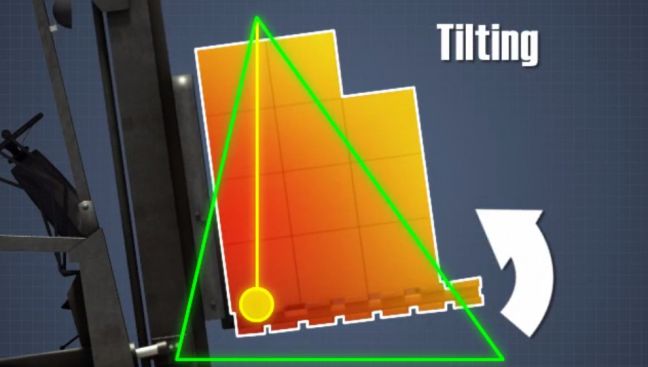
Positioning the Forks In Preparation to Lift the Load
As with much else when it comes to learning how to drive a forklift, it’s important to be aware of the following hazards when moving the forks into position while preparing to lift a load:
- Tipover
- Dropping the load
- Collisions
To reduce the risk of these hazards, follow these requirements and recommendations:
- Before you insert the forks into a pallet, make sure the forks are level
- Place the forks under the load as far as possible. The forks should be at least two-thirds the length of the load.
- If pallets are closely stacked, make sure your forks don’t go through to to the other side of the pallet (where they might possible catch another pallet)
- Position the load on the pallet in such a way that the load’s weight is centered between the forks
- Adjust the forks to distribute the weight evenly. You can do this manually or with a fork positioner.
- Once the load is on the forks, carefully tilt the mast back to stabilize the load more
- When you are picking up a load that’s off-center, do so very carefully, because these loads increase the risk of a tipover

Lifting the Load with the Forklift
Once you’re properly placed the forks under the lift, it’s time to lift the load.
Be particularly careful of these hazards while lifting the load with the forklift:
- Not enough clearance (above)
- Falling loads
- Stuck loads
To reduce the risk of these hazards, follow the requirements and recommendations below:
- Before raising the load, check to make sure there’s enough clearance overhead before lifting.
- Carefully lift the load up above the lower stack by about 4 inches
- Once the load is clear, tilt the mast back a small amount so that the load rests against the load backrest extension
- Make sure the load isn’t caught on anything
- Return the life control level back to neutral slowly
Lowering the Load
After you’ve lifted the load, in most cases you’ll travel somewhere before lowering and unloading the load. Remember we’ve already covered tips for safely traveling with a loaded forklift above.
Once you’ve completed your travels and are unloading the load, significant potential hazards include:
- Falling loads
- Striking objects with the load

High Tiering
It is common for forklifts to be used to stack materials in multiple tiers high off of the ground. This practice is known as “high tiering.”
High tiering brings with it its own set of hazards, including:
- Overloading the stack
- Tipover
Follow these requirements and recommendations to reduce those hazards:
- Put the heaviest loads on the bottom, with the lightest loads on the top
- Reduce the load below the capacity of the reach truck as the mast is fully extended
- While you deposit the load on the top tier, extend the reach mechanism forward slowly and carefully
- Be cautious when tilting a load forward or backward while high tiering
Truck Trailers and Railroad Cars
Forklifts often have to enter and/or leave truck trailers and railroad cars while moving materials.
These tasks involve a new set of hazards, including:
- Falling off a loading dock
- Movement of the trucks or railroad cars during loading and unloading, which can cause problems for the forklift operator
- Dockboards that slip or are otherwise inadequate/deficient
In order to reduce hazards associated with this type of work, OSHA’s 29 CFR 1910.178 presents a list of situations in which special precautions must take place before a forklift can enter a railroad car and/or a truck trailer. These include the following.
For trucks and railroad cars:
- Make sure the floor can support the weight of the forklift and load. To determine the capacity of the trailer floor, consider multiple factors, including floor thickness, cross-member spacing, unsupported floor area, and more. As a general rule, the larger the unsupported area, the lower the forklift capacity the trailer will have for floors with the same thickness.
- Make sure the entry door provides enough vertical clearance
- Always drive the forklift straight across the bridge plates when entering or exiting
- When working in a dark trailer, use dock lights and/or headlights
- When entering or exiting, sound the forklift’s horn
- Avoid using the forklift to open railroad car doors. Do so only if:
- The forklift has a device specifically designed to do so
- The forklift operator has been trained to use that device properly and safely
- All other employees stand clear
For trucks:
Always set the brakes on highway trucks and placed wheel chocks under the rear wheels before a forklift enters.
Follow these Chocking requirements for trailers docked to buildings with downward approaches (and be aware that the braking regulations by the Federal Motor Carrier Safety Administration preempt OSHA from enforcing OSHA regulations in 29 CFR 1910.178(k)(1) and 29 CFR 1910.178(m)(7) for commercial motor vehicles (CMVs).
It may be necessary to use fixed jacks to support a semitrailer that is not coupled to a tractor while forklifts are entering and exiting to load/unload. This can help prevent upending.
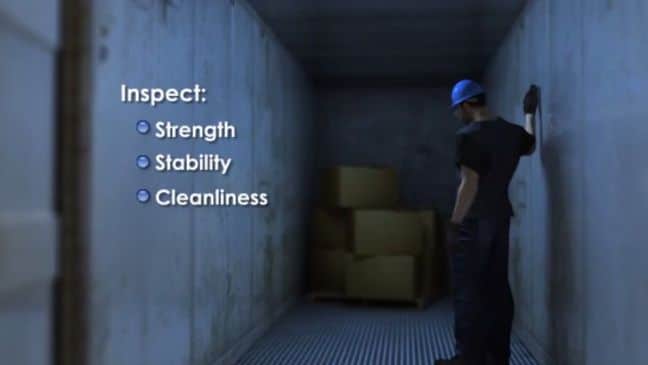
For railroad cars:
Use wheel stops or other positive protection to prevent railroad cars from moving when forklifts will enter or exit for loading and unloading purposes.
Use positive protection to prevent railroad cars from being moved while dockboards or bridge plates are in position and while forklifts are entering/exiting.
Requirements for dockboards and/or bridge plates:
29 CFR 1910.30(a), OSHA’s Walking-Working Surfaces standard includes the following requirements when dockboards/bridge plates are used. These all apply when forklifts are traveling on dockboards/bridge plates as well:
- All dockboards must be strong enough to carry the load on them
- Portable dockboards must be secured in position. Use anchors or other devices that prevent them from slipping.
- Powered dockboards must be designed and constructed to meet the specifics set forth in Commercial Standard CS202-56 (1961) “Industrial Lifts and Hinged Loading Ramps” published by the U.S. Department of Commerce
- To ensure safe handling, handholds or other similar devices must be provided on portable dockboards
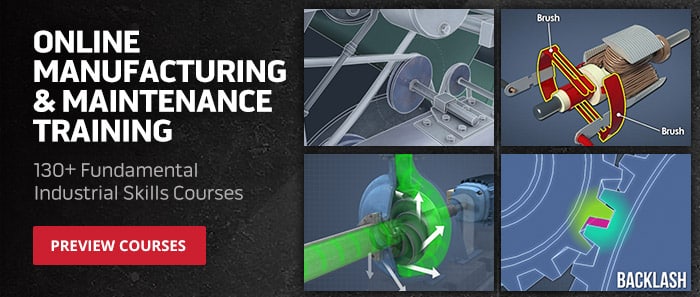
Additional Forklift Operation Considerations: Removal from Service and Maintenance
In addition to everything else you’ve now learned about how to drive a forklift, keep the following in mind regarding removing forklifts from service and maintaining forklifts.
Removing Forklifts from Service
Forklifts must be removed from service if there’s a problem, including:
- Mechanical breakdown
- Leak
- Overheating
- Fire
Follow these requirements and recommendations for removing forklifts from service. If a forklift operator notices any of the following, the operator should stop the forklift, park the forklift, and get assistance:
- The forklift is not in safe operating condition (for any reason)
- Any defects are found
- The forklift emits hazardous sparks or flames from the exhaust system
- The temperature of any part of the forklift is greater than normal operating temperature
- A leak in the fuel system is discovered
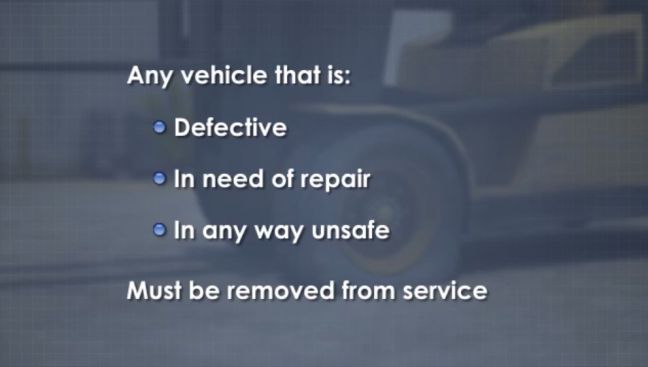
Forklift Maintenance
One of the best ways to prevent a hazardous operating condition on a forklift is to make sure the forklift receives regularly scheduled maintenance, including preventive maintenance.
Be certain that the forklift receives regularly scheduled maintenance, and don’t operate a forklift that requires maintenance.
In addition to regularly scheduled preventive maintenance, always report repair problems to a supervisor for unscheduled maintenance as well.
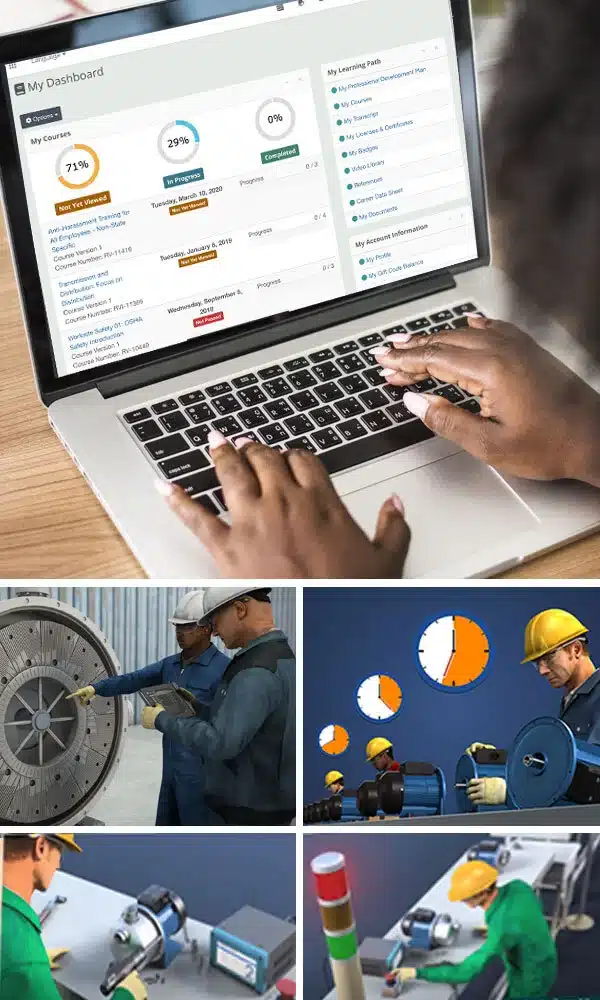
Vector EHS Management Software empowers organizations – from global leaders to local businesses – to improve workplace safety and comply with environmental, health, and safety regulations.
Learn more about how our software can save you valuable time and effort in recording, tracking, and analyzing your EHS activities.
Learn more about how we can help:
- Incident Management Software →
- EHS Inspection Software →
- Key Safety Metrics Dashboard →
- Learning Management System (LMS) and Online Training Courses →
- Mobile Risk Communication Platform
Download our EHS Management Software Buyer’s Guide.
Forklift Operator Training Requirements According to OSHA
OSHA’s guidelines for forklift operator training are detailed in 1910.178(l). These requirements can be categorized into specific components, each addressing crucial aspects of forklift operation:
- Safe Operation (1910.178(l)(1)): Ensuring forklift operators are trained to operate the equipment safely.
- Training Program Implementation (1910.178(l)(2)): The establishment and execution of a comprehensive forklift operator training program.
- Training Program Content (1910.178(l)(3)): The content of the training program, encompassing general principles of safe operation, the specific type of vehicles in use, workplace hazards associated with forklift operation, and adherence to OSHA’s powered industrial truck/forklift standard.
- Refresher Training and Evaluation (1910.178(l)(4)): Periodic refresher training and evaluation to ensure ongoing competence and safety awareness.
- Avoidance of Duplicative Training (1910.178(l)(5)): Preventing redundancy in training efforts to optimize efficiency and effectiveness.
- Certification (1910.178(l)(6)): Mandating that employers certify forklift operators who have successfully completed the training program.
- Dates (1910.178(l)(7)): Establishing clear timelines and schedules for training activities.
In compliance with OSHA standards, employers bear the responsibility of developing and implementing a forklift operator training program. This program must cover the fundamental principles of safe forklift operation, consider the specific type of vehicles in use (including powered industrial trucks beyond forklifts), address workplace hazards associated with forklift use, and adhere to OSHA’s powered industrial truck/forklift standard.
How to Get a Forklift License
Obtaining a forklift operator’s license involves adherence to OSHA’s Powered Industrial Trucks standard (29 CFR 1910.178). Contrary to common belief, OSHA doesn’t issue certifications directly; instead, it mandates employers to establish a training program based on safe operation principles, specific forklift types, workplace hazards, and OSHA standards. The employer-driven training encompasses formal instruction and practical elements, requiring employee participation in the employer’s program.
The training program must encompass a combination of formal instruction and practical training, such as lectures, discussions, interactive computer learning, video tapes, written materials, demonstrations by trainers, practical exercises performed by trainees, and evaluations of operators’ performance in the workplace. The employer holds the responsibility for certification, making it imperative for those seeking a forklift license to engage in their employer’s training program. The training should cover forklift-related topics like operating instructions, controls, stability, and maintenance, as well as workplace-related topics such as surface conditions, load handling, pedestrian traffic, and hazardous environments.
Forklift Operation FAQs
- How frequently should forklift operators undergo training?
- Answer: Forklift operators should be trained initially and then re-evaluated at least every three years. Refresher courses are recommended if operators demonstrate unsafe practices or are involved in accidents.
- What topics are covered in a standard forklift training program?
- Answer: Training programs cover pre-operational inspections, safe operation practices, load handling, parking and securing the forklift, and awareness of specific hazards like tipovers and collisions.
- Is it necessary to wear seat belts while operating a forklift?
- Answer: Yes, operators should wear seat belts at all times when operating a forklift to prevent ejection during tipovers or collisions.
- What are the requirements for parking a forklift safely?
- Answer: Avoid parking on a grade, never park in unauthorized areas or block aisles/exits, and follow company recommendations. Engage the parking brake, turn off the ignition, and block wheels on grades.
- Can a forklift be considered unattended even if it’s within the operator’s view?
- Answer: Yes, if the operator is 25 feet away, the forklift is considered unattended, even if it’s within the operator’s view.
- How should operators handle loads with a forklift to minimize risks?
- Answer: Operators should check for off-center or damaged loads, secure loads for stability, center the load, and be aware of the forklift’s load capacity. Approach loads slowly and ensure proper mast positioning.
- What steps should be taken during a forklift tipover to enhance safety?
- Answer: For a sit-down counterbalanced forklift tipping forward, operators should stay inside, hold the steering wheel, brace their feet, lean away from impact, and lean forward.
- Are there specific precautions for high tiering materials with a forklift?
- Answer: Yes, precautions include placing the heaviest loads at the bottom, reducing loads below the reach truck capacity, and being cautious when tilting loads forward or backward.
- What are the requirements for approaching and leaving truck trailers and railroad cars with a forklift?
- Answer: Operators must ensure the floor’s capacity, vertical clearance, straight entry/exit, use caution in dark trailers, and sound the horn when entering or exiting.
- What steps should be taken when a forklift needs maintenance or is inoperable?
- Answer: Forklifts must be removed from service for issues like mechanical breakdown, leaks, overheating, or fire. Operators should stop, park, and seek assistance if any defects are noticed or if the forklift emits hazardous sparks or flames. Regularly scheduled maintenance is essential to prevent hazardous conditions.
Conclusion: How to Operate a Forklift
We hope you gained some benefit from this article on how to operate and drive a forklift. Please let us know if you have any additional questions.
For additional information, please check out:
- This OSHA Forklift/PIT eTool (which we used as a source for this article)
Some Other Articles We’ve Written About Forklifts
We’ve got some more articles about forklifts you may find helpful:
- How to Get a Forklift License
- OSHA Forklift Certification and Training Requirements
- Forklift Safety Tips and Checklists
Online Training Courses We Offer for Forklifts
We’ve also got the following two online forklift operator courses available you may find helpful:
Our Forklift Safety Training Video
Our Forklift-Reducing Product Damage online course
And before you go, feel free to download our Guide to OSHA General Industry Compliance, below.
OSHA General Industry Compliance Guide
Compliance guidelines for the OSHA 1910/general industry standards.
Yes! I Want this Guide!